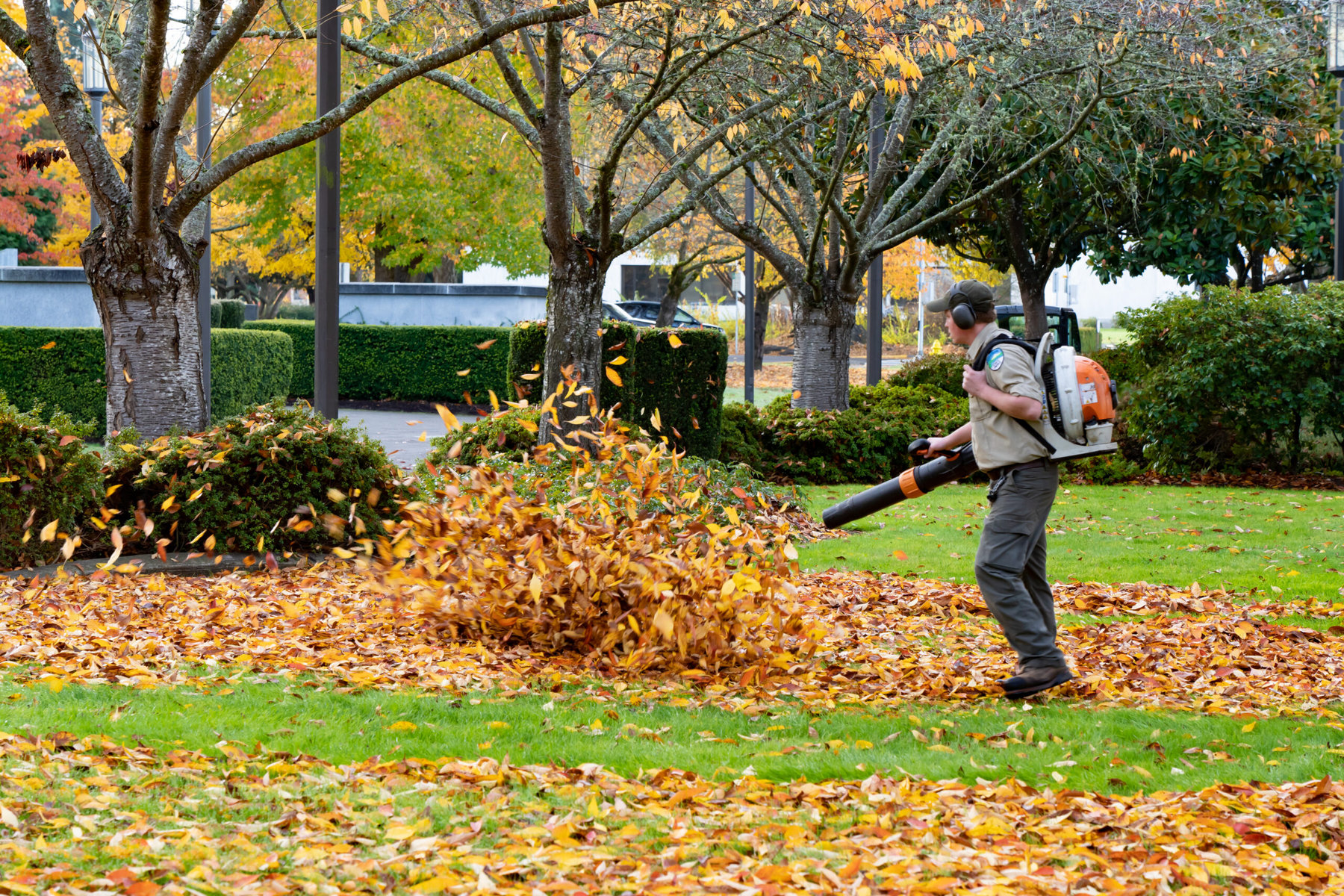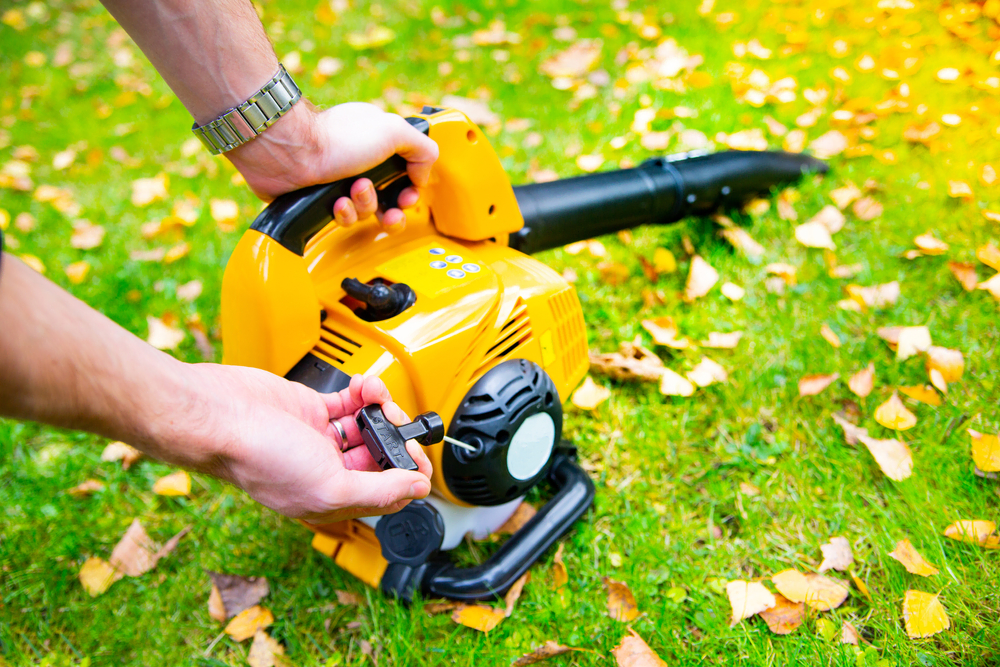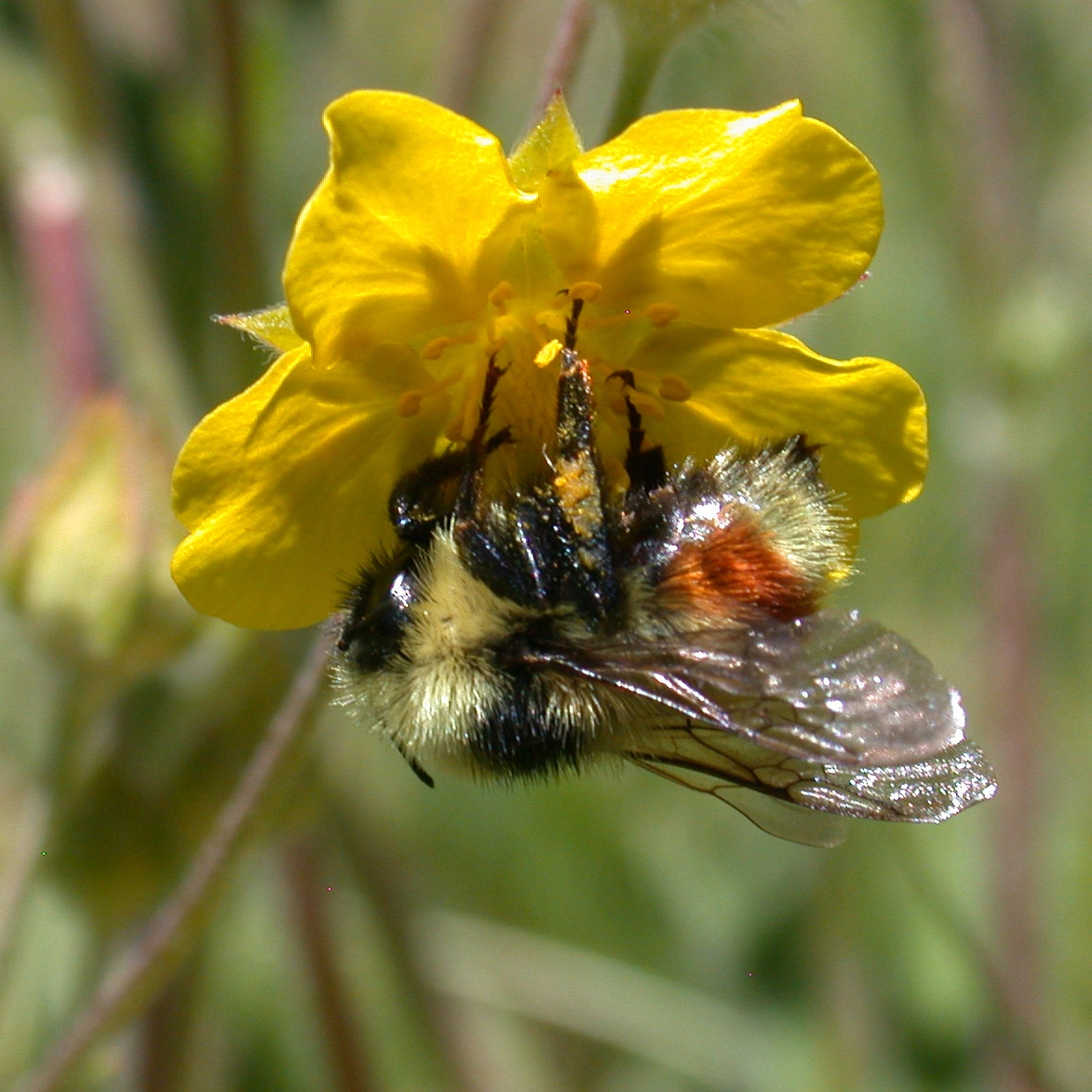Ten years ago, when Michael Hall retired as dean of students at the Pacific Northwest College of Art and began to spend more time at home, he noticed an ear-splitting noise — something he’d never been around during the day to hear. “The neighbor’s contractor was rattling my windows and assaulting my ears!” he says. One day, he went out and met the contractor at the curb and said, “Can you dial back on the leaf blower? There’s only 10 feet between our houses and it’s really a nuisance.” The contractor responded, “If you kept better care of that side of your house, I wouldn’t have to do that.”
That launched Hall on a mission that he’s still leading to this day. “At first I started out as Don Quixote out there, tilting at windmills,” says Hall, who describes himself as an old Berkeley hippie. Today he’s not only a co-chair of Quiet Clean PDX, a grassroots organization that’s pushing to ban the use of gas-powered leaf blowers city-wide, but part of a growing national movement. More than 100 US cities have banned gas-powered leaf blowers and over 45 different organizations across the country are part of the Quiet Clean Alliance, from Quiet Clean Philly to Quiet Clean Seattle.

Not only do gas-powered leaf blowers create extreme noise pollution — the most powerful can produce sounds of up to 100 decibels of low-frequency noise, around the same as a Boeing 737 taking off — they are also an environmental menace and a threat to human health. Most have what’s called a “two-stroke engine,” an outmoded design that burns a mix of gas and oil (for lubrication). It’s been shown that because this type of equipment doesn’t have catalytic converters, only two-thirds of the gas and oil mix is burned as fuel. The rest is emitted as toxic fumes of nitrogen oxides and volatile organic compounds (VOCs), two of the main ingredients in ground-level ozone, which both trigger asthma attacks and contribute to premature death. In fact, according to the California Air Resources Board, a single operator using a gas leaf blower for one hour generates the same smog-forming emissions as one car driving 1,100 miles. These small devices also leak formaldehyde and benzene, both of which are known carcinogens. And the people who are most impacted by these toxic fumes? The lawn care workers who use them, many of whom are from lower socio-economic backgrounds. After that, children, the elderly and anyone who is ill are the most impacted — and unlike landscapers, they aren’t wearing protective gear.
Finally, these relatively small devices also emit tons (literally) of carbon dioxide, the leading cause of global warming. According to the latest data from the EPA, fossil fuel-powered lawn equipment (including not just leaf blowers but trimmers, mowers, weedwackers, etc.) emits 30 million tons of carbon dioxide in the US each year — more than the amount of greenhouse gases that Los Angeles produced in 2021.
The high-decibel noise pollution of a gas-powered leaf blower is not just obnoxious and disruptive; it can actually cause tinnitus and hearing loss for the workers who use them (or anyone who is close to one for a full hour). In an article in The Atlantic about his antipathy to gas-powered leaf blowers, journalist (and former Jimmy Carter speechwriter) James Fallows explained why the low-frequency buzz of these devices is especially insidious. “Low-frequency noise has a great penetrating power: It goes through walls, cement barriers, and many kinds of hearing-protection devices,” writes Fallows. The upshot is that even if crews are wearing ear protection, they’ll likely suffer hearing loss after long-term repeated use.

When it comes to changing the status quo, California is in the lead, as usual, being the first state to require manufacturers to make zero-emission lawn equipment including leaf blowers, lawn mowers and other small off-road lawn equipment. (The law went into effect this month). Though the law doesn’t ban existing gas-powered leaf blowers or lawn mowers, the California legislature has also allocated $30 million in incentives for individuals and landscaping businesses to make the switch to zero-emission lawn equipment.
Crushed by negative news?
Sign up for the Reasons to be Cheerful newsletter.Cities from Burlington, Vermont to Evantston, Illinois have banned the sale and use of gas-powered leaf blowers along with one county: Montgomery County, Maryland. At least 25 cities across California have enacted legislation to regulate or ban gas-powered leaf blowers including Oakland, Beverly Hills and Santa Barbara.
But the gold standard, according to Hall from Quiet Clean PDX, is Quiet Clean D.C. James Fallows and Chuck Elkins, former director of the Noise Control Program at the EPA, led the charge years ago and after a three-year phase-in, the ban finally went into effect in 2022. By all accounts, it has been successful. What sets Washington, D.C.’s ban apart is its broad prohibition of gas-powered blowers (it is both illegal to use them and illegal to sell them in District stores); a three-year ramp-up that allowed for education and compliance; and no-nonsense enforcement. According to Hall, “They’ve got it set up where a citizen affidavit can be filed to the Department of Licensing and Consumer Protection and then the Department sends, at first, a warning. They didn’t want it to be punitive, they wanted it to be an educational issue for the mow and blow guys,” he says. After that first warning, fines of up to $500 are issued.

There are many arguments against the bans. Some landscapers argue that the electric blowers aren’t as powerful. Others complain about the expense of buying all new equipment. Hall from Quiet Clean PDX understands that people have a deep relationship with their tools and may be reluctant to part with them. But he points out that there’s also an economic benefit to converting. It costs about $2,000 to get a top-of-the-line electric leaf blower (including charger and batteries), but the return on investment is only a year or two at most. After that, you never have to buy gasoline or oil again.
The Santa Cruz Coalition for a Healthy & Safe Environment recently published a study on the economics of switching and found that even in the most expensive scenario, for a high-performance Stihl battery blower, the savings are significant. Though the up-front cost of this device is $2,261 (including tax), the coalition found, a positive return on investment is seen in just 10.5 months. By the end of the second year, using the electric blower would already have saved $2,904.
Nick Seagraves, who runs Seagraves Landscaping in West Linn, Oregon, has been a landscaper for 40 years. He only started using electric devices a few years ago, mostly because Lake Oswego’s Department of Parks & Recreation (a client) required it. He has a crew of 14 and says that his guys like the electric blowers. “They actually prefer them,” he admits. That said, he says that even the Husqvarna electric models he purchased don’t put out quite as much energy as the gas blowers. But now that he has them, he says homeowner associations that have long been clients really appreciate them. “It gives us an edge,” he says.
Many cities (including D.C. and Dallas) are offering rebates or trade-in programs for quieter and less polluting electric blowers, which helps lessen the initial cost of switching over. On January 1 of this year, a new law went into effect in Colorado giving residents a 30 percent discount on all electric lawn mowers, leaf blowers, trimmers, and snow blowers.
Back in Portland, Quiet Clean PDX is working to get Portland City Council to vote on the issue this year. Does Hall hope that Quiet Clean PDX will eventually take up the crusade against electric leaf blowers, too? Even though they don’t emit benzene or VOCs, they still generate propulsive wind speeds of up to 200 miles per hour, stirring up ultrafine particles of demolition debris, fecal matter, pollens, pesticides, dirt and debris, and industrial pollutants.

Hall is philosophical. “Yes, it would be great to Make America Rake Again,” he says. He is a proponent of Leave the Leaves, a campaign initiated by the Xerces Society, a nonprofit committed to protecting pollinators and other invertebrates. Pollinators, it turns out, find their homes in leaves that are a few inches thick. “We’ve had a tremendous uptick in birds since we started leaving the leaves,” Hall says.
But Hall’s main focus is eliminating gas-powered blowers. Though he started out most offended by the devices’ noise pollution, he’s now more panicked about the carbon dioxide they emit. “It’s an existential issue right now,” Hall says.
“I’ve become oddly more incremental in my thinking,” he says. He points to a quote by Martin Luther King, Jr.: “If I cannot do great things, I can do small things in a great way.”
“If my contribution can be getting off the polluting, death-creating bottom line with lawn equipment,” Hall says, “that’s what I’d like to do with the remainder of my life.”









